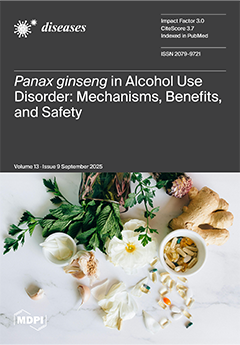Background: Breast cancer is the most frequently diagnosed cancer in women, and advances in genetic screening have led to a growing number of patients being identified as
BRCA mutation carriers. For these women, the safety of pregnancy following cancer treatment remains insufficiently studied,
[...] Read more.
Background: Breast cancer is the most frequently diagnosed cancer in women, and advances in genetic screening have led to a growing number of patients being identified as
BRCA mutation carriers. For these women, the safety of pregnancy following cancer treatment remains insufficiently studied, and possible biological mechanisms—including defective DNA repair pathways and accelerated depletion of the ovarian reserve—may influence fertility potential and pregnancy outcomes. This exploratory research set out to examine whether
BRCA status impacts reproductive outcomes in breast cancer survivors, while also considering underlying biological explanations for any observed differences.
Methods: We performed a retrospective, single-institution cohort study involving young women with non-metastatic breast cancer who had undergone
BRCA testing over a 17-year period. Clinical, oncologic, and reproductive data were collected and patients were followed longitudinally.
Results: Of the 117 women who met eligibility criteria, 15 conceived at least once after cancer therapy; 11 carried no
BRCA mutation, and 4 were
BRCA-positive (2 with
BRCA1 and 2 with
BRCA2 variants). While the overall cohorts were broadly comparable, significant differences emerged in terms of tumor grade, hormone receptor status,
HER2 expression, and treatment modalities.
BRCA mutation status did not appear to influence reproductive outcomes, and all pregnancies in both groups progressed to full-term delivery without major obstetric complications or congenital anomalies.
Conclusions: Within the limitations of a small, retrospective, single-center dataset without adjustment for confounding variables, these preliminary findings suggest that pregnancy after breast cancer may be safe for
BRCA mutation carriers, with no apparent adverse effect on maternal prognosis or birth outcomes. Confirmation from larger, prospective, multicenter studies is essential to validate these results, clarify possible biological mechanisms, and inform evidence-based fertility counseling and survivorship planning for this patient population.
Full article






